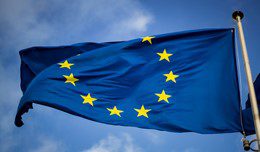
 Tugce Kucukali is an IPilogue Writer and incoming LL.M. Candidate at University of British Columbia.
Tugce Kucukali is an IPilogue Writer and incoming LL.M. Candidate at University of British Columbia.
The European Union (EU) Court of Justice Advocate General, Saugmandsgaard ØE, recently published the long-awaited opinion on the action brought by the Republic of Poland against the contentious Article 17 of the Directive on Copyright and Related Rights in Digital Single Market. The opinion examines the background of the Directive, the contested provisions, their interference with the right to freedom of expression, and the compatibility of this limitation with the Charter of Fundamental Rights of the European Union.
The Advocate General explains the ratio legis of the Directive by referencing the value gap between the value that an online content-sharing service provider acquires from the copyrighted subjects and the value that it distributes to the rights-holders. The amount distributed is quite insignificant compared to the amount earned. The Directive also addresses questions such as whether the providers should themselves acquire rights on a work by licensing and remuneration and whether they could benefit from copyright exemptions, such as caricature, parody, and pastiche. The Directive attempts to achieve an equal footing on which providers and rights-holders could negotiate and eliminate this gap.
Under the Directive, the strict liability of the content-sharing service providers, who communicate the copyrighted works to the public, would require them to change their business model. As per Article 17, the providers shall not solely perform the “notice and takedown” procedure but “notice and stay down,” making the best efforts to prevent future uploads. This provision imposes an obligation of diligence to the providers since removed content is often re-uploaded. Rather than removal of such content ex post, ex ante prevention is set forth.
By this obligation, the providers employ diverse software tools such as hashing, watermarking, or fingerprinting. The Directive does not require the providers to adopt specific measures. Rather than a direct obligation, their use is indirectly imposed as an exemption from liability. The Advocate General emphasizes that this obligation is stipulated for operators that manage a significant, or even huge, volume of content. In each case, the measure is determined by considering the type, audience and size of the service, type of works, availability of suitable and effective means, and proportionate cost.
The Advocate General agrees that the provision interferes with freedom of expression since users are not completely free to upload any content. However, the content is monitored not to suppress freedom of expression, but to prevent copyright infringement. Even though the providers are currently able to filter and block any content according to their self-regulations, this does not constitute interference by a public authority, as is the case of Article 17.
Regarding the compatibility of this limitation with the Charter, the Advocate General investigated whether the limitation is prescribed by law, respects freedom of expression, and adheres to the principle of proportionality. Since the Advocate General regards this monitoring obligation as a specific and not a general obligation, prohibited by Article 15 of the Directive 2000/31, the limitation does not infringe the “essence of the right”, its untouchable core which must remain free from interference. According to the Advocate General, the EU legislature’s safeguards minimize the freedom of expression risks. This respects the proportionality requirement while considering the value gap created, the difficulties of the notice and takedown system for right holders, and the fact that the obligation concerns a specific group of providers. Even though the Advocate General’s opinion was expected to sway in this direction, the instructions made towards the member states are crucial for the transposition of the Directive into their national laws, eventually leading to the smooth application of the Directive across the EU.

